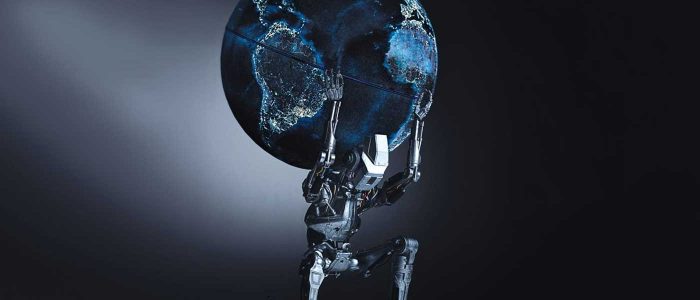Artificial Intelligence (AI) is reshaping the economic dimensions of both developed and developing countries in particular, and underdeveloped nations in general. Historically, technological advancement modernised various aspects of the economy and related sectors. The invention of the wheel is considered as one of the greatest milestones of technology to date, following which the invention of steam engine and electricity practically reshaped the economic forces and their foundations. One cannot forget the industrial revolution in this regard. AI is the pinnacle of technological advancement because of its unique features which were absent in the previous technological breakthroughs. Worth mentioning here is the presence of cognitive machines which cannot only perceive but are also capable of making decisions and generating new ideas that have the potential to propel economic growth and development to an unprecedented level.
The journey of machines is successfully achieving autonomous features after the automated phase. This kind of remarkable achievement has not been accomplished in the entire history of economics, manufacturing, production forces, trade, commerce and GDP growth. Even at the semi-autonomous stage, AI is transforming geo-economics with an exponential speed. It is being predicted that by 2030, AI will contribute $15.7 trillion to the world GDP. Out of $15.7 trillion, China alone will get $7 trillion which is 45% of total AI contribution to the world GDP. The share of North America, Latin America and Europe will be $3.7 trillion, $0.5 trillion and 2.5 trillion respectively which is 42% of the total world GDP. The share of developed Asia will be $0.9 trillion and the rest of the world will contribute $1.2 trillion which is 13 % of the world GDP. The magnitude of AI contribution to the world GDP by 2030 can be assessed from the fact that it would be 13 times Australia’s GDP, 19 times Apple’s market capitalisation, 186 times Bill Gates net worth and 4132 times the cost needed to build one World Trade Center. On the other hand, the impact of AI on specific industries will account for $14 trillion Gross Value Added (GVA) by 2035.
There are four major sectors which are most likely to contribute greater and faster due to AI. The manufacturing sector, professional services, financial services and wholesale and retail. Their contribution is predicted about $25 trillion due to AI features. The manufacturing sector is similarly expected to contribute $8.4 trillion, professional services $7.5 trillion, wholesale and retail $6.2 trillion and financial services $3.4 trillion.
It is being predicted that by 2030, AI will contribute $15.7 trillion to the world GDP. Out of $15.7 trillion, China alone will get $7 trillion which is 45% of total AI contribution to the world GDP. The share of North America, Latin America and Europe will be $3.7 trillion, $0.5 trillion and 2.5 trillion respectively which is 42% of the total world GDP.
This kind of massive and rapid transformation due to AI features has three major repercussions. Firstly, it poses a threat to replace human labour on large scale. Secondly, energy demands for machines has the potential to generate new conflicts and confrontation. Lastly, it has gravest environmental effects. The AI features are transforming the nature of labour due to heavy reliance on autonomous or on semi-autonomous machines because of fastest manufacturing, high efficiency, low cost of maintenance, long durability, adaption to new skill learning, greater mobility, less time consumption and global reach.
Some experts are even predicting it as a serious threat to human labour. According to Frey and Obsorne, AI driven machines and robots could replace 47% of labour force in the US in the next two to three decades. This is very alarming not for just the economics but also for humanity. The uneven exponential economic growth means that exponential concentration of wealth and resources will enlarge the gap between the general populace and economic-giants. Now due to dependence on human labour it is difficult for economic giants to totally expel them from the economic cycle but after the rise of the machines it will not be the priority of these economic giants to consider these risks. In the words of Stephan Hawking, ‘If machines produce everything we need, the outcome will depend on how things are distributed. Everyone can enjoy a life of luxurious leisure if the machine-produced wealth is shared, or most people can end up miserably poor if the machine-owners successfully lobby against wealth redistribution.’
The energy demands are rapidly increasing due to rapid increase in number of machines. By 2035, the energy demand of the world will increase two-fold. To meet the ever increasing energy demands, stronger countries will have to exploit more energy resources which might trigger new conflicts. Post Industrial Revolution era is witness to this kind of conflict due to heavy energy demands in order to maintain industrial supremacy. Last but not the least environmental degradation is the most alarming consequence of machine’s era.
